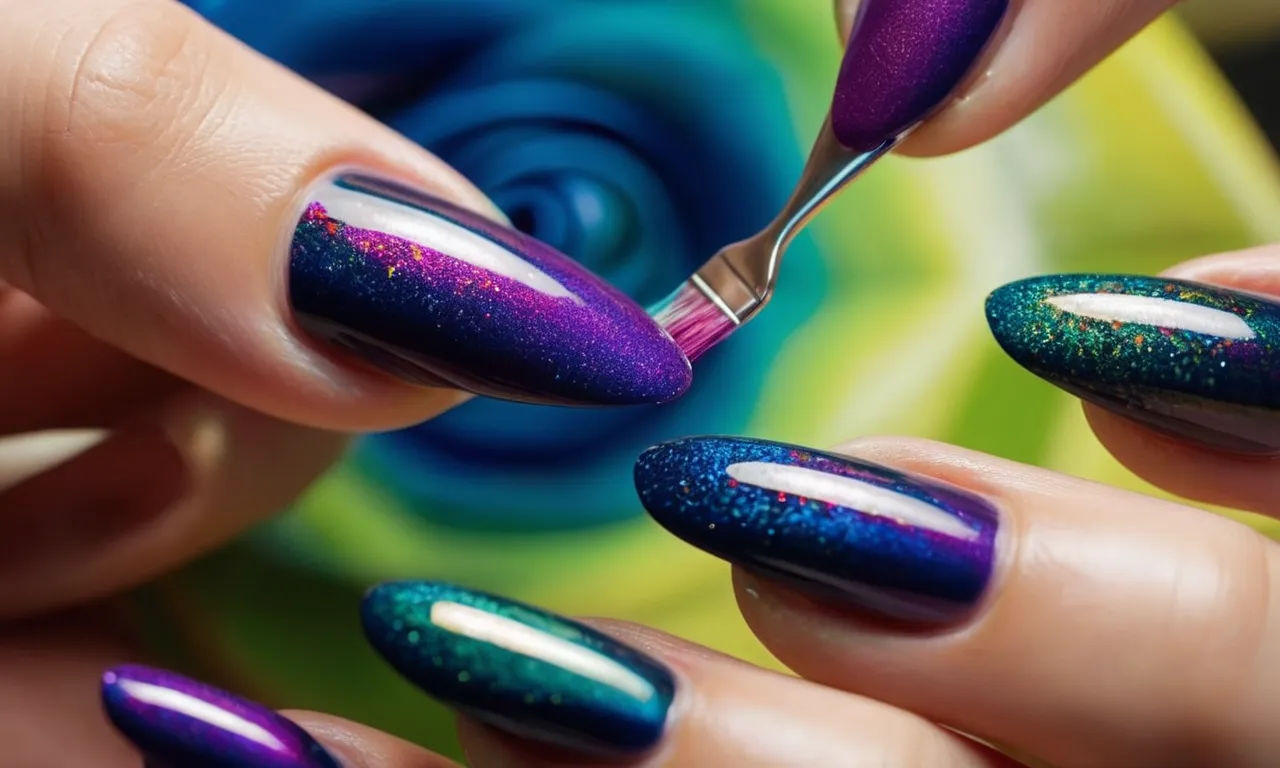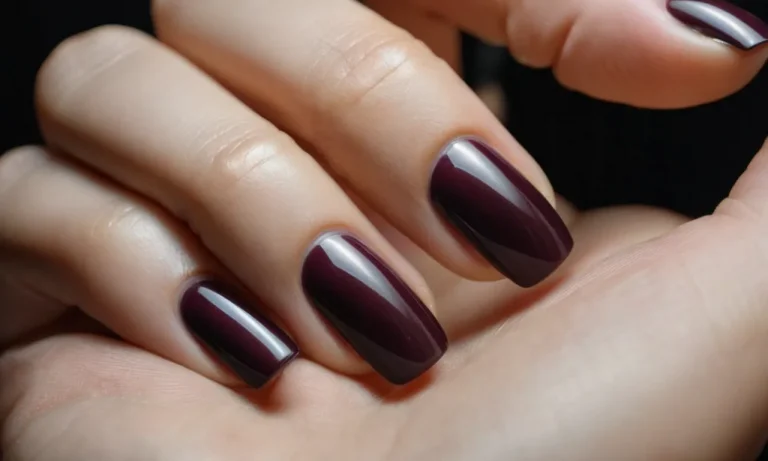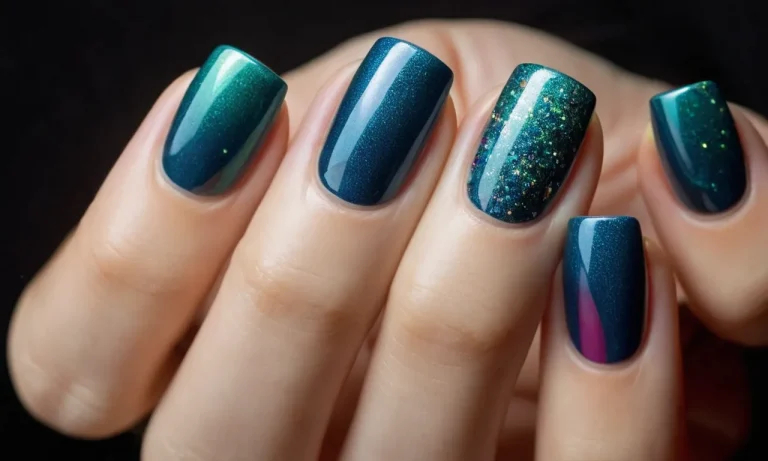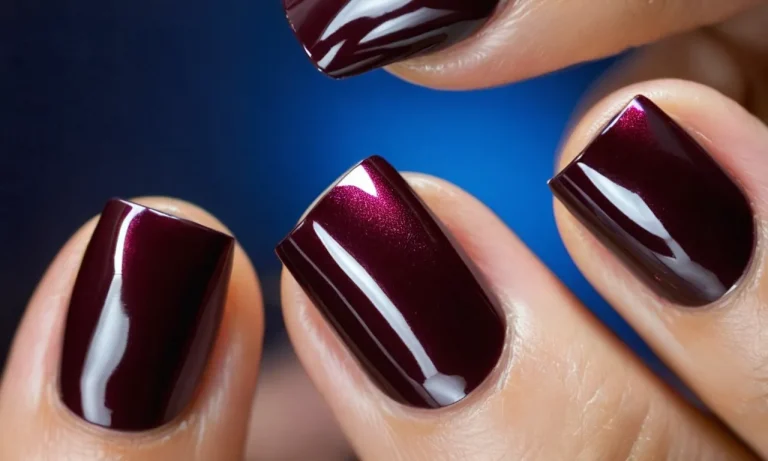Can You Paint Over Acrylic Nails? A Detailed Guide
Applying nail polish to your natural nails is easy enough, but what about painting over acrylic nails? If you’ve just had a fresh set applied at the salon, or have filled out your own acrylics at home, you may be wondering if you can paint over top with regular nail polish without damaging the acrylic.
The quick answer is: yes, you can safely paint over acrylic nails using regular nail polish. However, there are some tips and tricks to getting an even application and long-lasting manicure when painting on top of acrylics.
Read on for a detailed guide on prepping acrylics for polish, choosing the right formulas, application techniques, and upkeep.
How to Prepare Acrylic Nails Before Painting
Getting your acrylic nails ready for a fresh coat of polish is important for ensuring the manicure lasts. Here are some tips for prepping acrylics before painting:
Remove any oil or lotion
Make sure there are no oily residues on the acrylic nails before painting. Cleanse nails with soap and water or an acetone-free nail polish remover. This removes any traces of hand cream, lotion or oils which can prevent polish from adhering properly.
Gently buff the nails
Use a fine-grit nail file or buffer to gently smooth the acrylic surface. Be very gentle and avoid over-filing as this can make nails thin and brittle. Just lightly buff away any ridges and shine the nails.
Wipe nails with acetone or alcohol
After buffing, wipe the nails with acetone or rubbing alcohol using a cotton ball. This helps dehydrate the nails and remove any dust for better polish application. Allow to air dry completely before painting. Acetone works well but can be quite drying, so rubbing alcohol is a good alternative.
Properly prepping your acrylics helps the manicure last longer. Following these simple steps allows regular polish to adhere smoothly and evenly for a flawless, long-lasting look. With the right prep work, your colorful nail polish will stay chip-free on acrylics for up to a week!
Choosing the Right Nail Polish Formulas
Regular creme polishes
Regular creme nail polishes, whether glossy or matte, tend to adhere the best on top of acrylic nails. The dense, opaque formula helps mask any unevenness or imperfections in the acrylic surface underneath. Popular brands like OPI and Essie have extensive creme color selections to choose from.
When painting over acrylics, use thin coats and allow each coat to dry fully before adding the next to prevent bubbling or peeling.
Gel polish
Gel polish can also work well over acrylics since it is formulated to be durable and long-wearing. However, removing gel polish requires soaking in pure acetone, which can weaken and damage acrylic nails over time with repeated use.
If you wish to use gel polish on acrylics, look for “soak-off” gel options which can be removed more gently and limit the harsh effects of acetone exposure.
Shellac/dip powder colors
Shellac and dip powder polishes create an extra-hard, armor-like coating on nails. Though very durable and chip-resistant, these polished can be difficult to remove from acrylic nails. The hard outer shell does not allow the acrylic material underneath to flex and breathe, which often leads to lifting, cracking, or breaking.
If shellac or dip powders are used over acrylics, be extremely gentle during removal to avoid excessive damage to the acrylic nail.
No matter which nail polish type you choose for your acrylic manicure, always prep the nail surface properly and use a high-quality top coat to maximize wear. Give your acrylics a break from polish every few weeks to maintain health and prevent excessive product buildup over time.
With the right polish formulas and proper care, you can safely paint stunning nail looks over your acrylic nails.
Application Tips for Painting Over Acrylics
Apply Polish in Thin Coats
When painting over acrylic nails, it’s important to apply the polish in thin, even coats to ensure proper drying and prevent chipping or peeling. According to nail care experts at Sally Beauty (https://www.sallybeauty.com/nails/nail-color/how-to-apply-nail-polish/), 2-3 thin layers of color is ideal, allowing each coat to dry fully before adding the next.
Rushing the process with thick, globby polish can lead to shrinking or cracking as it dries.
Additionally, wipe the nail plate with nail polish remover before painting to get rid of any oil or debris left from the acrylic application or filling process. This helps the polish adhere properly. When rolling the brush across nails, use straight central strokes along the nail, avoiding excessive brushing back and forth on the free edge.
Let Each Layer Dry Fully
It’s crucial to let each thin layer of polish dry thoroughly before adding another, usually 2-3 minutes between coats. Insufficient drying causes polish to drag and pull, muddying the color. Rushing also increases chances for imprints or dents from accidental bumps or touches before fully cured.
If you’re short on time, try a quick-dry topcoat or nail polish drying spray like Essie’s Spray de Mode (https://www.essie.com/nail-care-and-nail-polish/treatments/spray-de-mode) between layers. This seals in the color and allows you to apply the next coat faster without worrying about smudging.
Use a Top Coat for Protection
No manicure is complete without a quality top coat, which protects painted acrylics against chipping and fading. According to nail care statistics from Harper’s Bazaar (https://www.harpersbazaar.com/beauty/nails/g22748795/best-top-coat-nail-polish/), 70% of women think a top coat makes their manicure last longer.
When applying the top coat, use the same thin strokes as with color polish. Then, cap the free edge so there is a tiny overlay of top coat wrapping the tip. This seals the layered polish underneath. Let the top coat dry fully before resuming normal activity.
For maximum protection on acrylics, look for top coats made specifically for enhancement nails rather than natural nails.
Caring for and Removing Painted Acrylic Nails
Use cuticle oil daily
Using cuticle oil daily is crucial for maintaining the health of your natural nails underneath acrylics. The acrylic and polish layers can dry out the nails and cuticles, leading to cracking and peeling.
Massage a few drops of oil like jojoba or vitamin E around each nail and cuticle once or twice per day. This nourishes the area and prevents painful hangnails.
Avoid chipping by filing gently
Acrylic nails can chip easily from trauma or improper application. Filing them gently helps avoid cracks and breaks in the polish and acrylic layers. Use a fine-grain emery board in one direction across the nail. Never file back and forth as this stresses and thins the acrylic.
Check for rough edges and file them smooth. Rounding the tips slightly helps prevent snags and chips.
Remove polish with acetone-based remover
When it’s time for a new nail polish color, removing old acrylic polish requires acetone-based removers. Soak cotton balls with pure acetone or nail polish remover and hold them against each nail for 5-10 seconds until the polish dissolves.
Gently push back the cuticles and wipe off the polish residue. Avoid scraping at the nails as this can damage the acrylic layer underneath. The remover ensures you lift off polish neatly without harming your acrylic manicure.
Conclusion
Painting over acrylic nails is easy with the right polish formula and application techniques. Prepping the acrylic surface, using thin coats, letting each layer dry fully, and protecting with a quality top coat will help painted acrylics last.
With proper maintenance and removal, you can change up your acrylic manicure with regular nail polish anytime.







